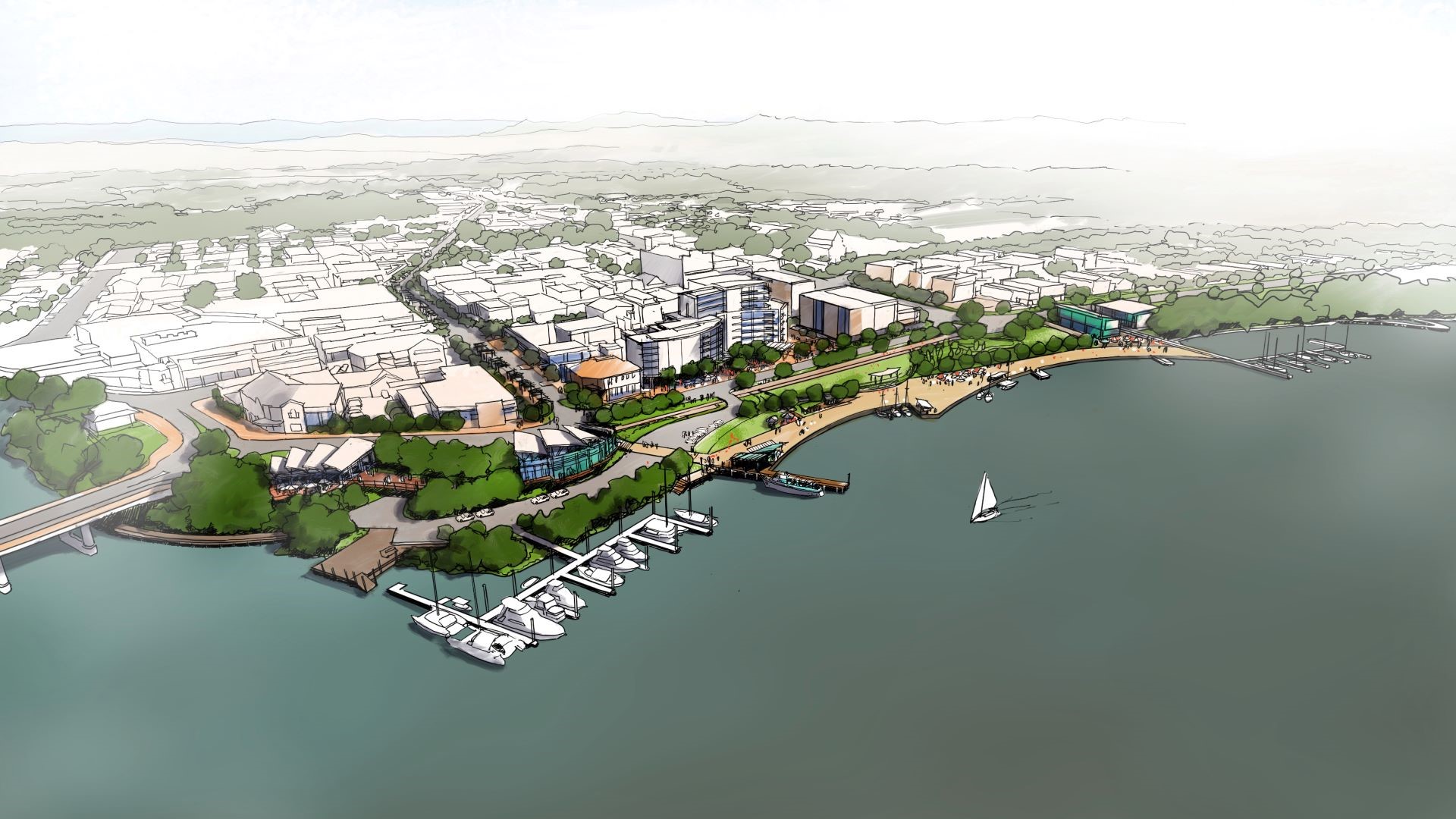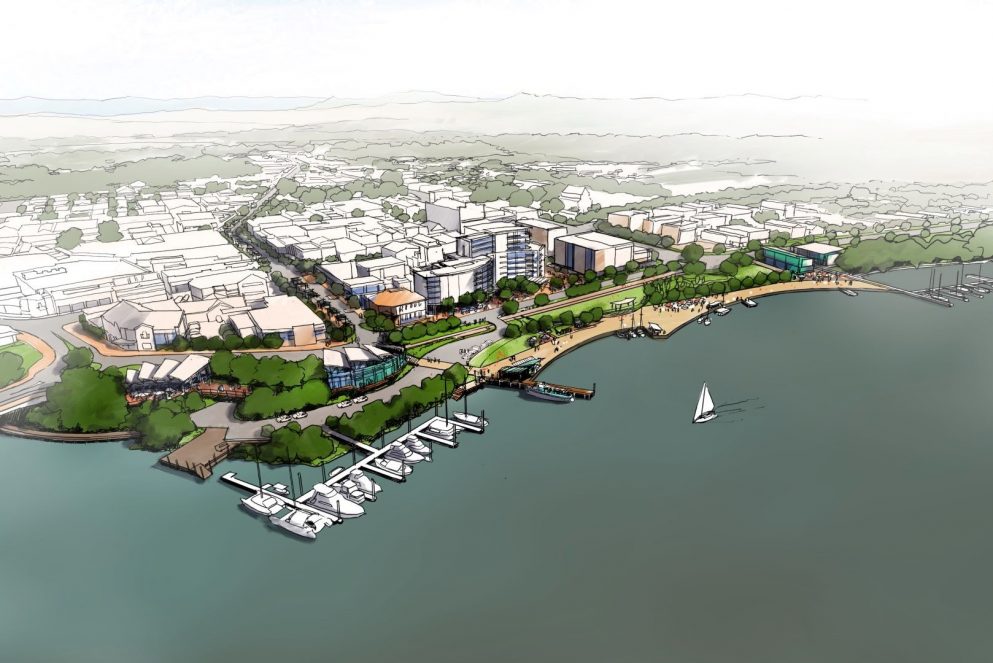Designing the Heart of Planned Communities: How Parks and Open Spaces Drive Success in Residential Developments
Designing the Heart of Planned Communities: How Parks and Open Spaces Drive Success in Residential Developments
When it comes to creating thriving residential planned communities in Queensland, parks, open spaces, and public areas aren’t just amenities - they’re the foundation of what makes a successful Residential Planned Community development.
These spaces shape the character and identity of a community, foster a sense of belonging, and improve both mental and physical wellbeing. At Vee Design, our extensive experience in delivering some of Queensland’s most success residential planned community, over the past 18 years, has confirmed to us that well-designed public open spaces are essential to establishing successful vibrant and connected residential communities. We are unwavering in our commitment to help Developers and Council’s realise their vision with expertise and innovation.
As experienced Landscape Architects and Urban Designers, we know that public parks and open space must do more than look good from day one, they need to function as places for recreation, connection, and reflection over a long period, getting better with age. These public places become the heart of a community and are fundamental to the success of any residential development. We have shared our experience and learnings on why parks and open spaces are so crucial in shaping the future of Queensland’s Planned Communities, and how Vee’s insights and expertise can help Developers and Council’s deliver these spaces successfully.

Standing out in a competitive market: building authentic community identity
In Queensland’s competitive residential development market, standing out requires more than just offering an appealing price point. As Developers seek ways to attract residents, it’s essential to consider how well-designed parks, open spaces, and public realms can provide a community with a unique identity. Beyond functional appeal, these spaces create a sense of place that captures the essence of a community, making it memorable and inviting.
Creating a strong identity for a community starts with understanding the “place values” that will drive the development. This means defining what makes the location unique, considering its history, natural features, and potential social fabric. Working collaboratively through a place-based approach with the development team and considering the future community’s needs and aspirations helps to shape these values, can guide decision-making at every stage – from broad urban planning to the smallest design details. For a development to feel authentic, every element should reinforce these values, creating a cohesive sense of identity that residents can relate to and take pride in.
Incorporating local materials, public art, and culturally significant features can deepen this sense of connection, making the community feel genuinely rooted in its location. Public art, for instance, can reflect local stories or traditions, while the use of locally sourced materials can provide a subtle but meaningful nod to the area’s character. Cultural elements, especially when thoughtfully integrated, can bring an added layer of depth that resonates with residents and helps the development stand out in a crowded market.
Ultimately, crafting an identity that feels authentic and unique goes beyond aesthetics; it’s about fostering a sense of belonging that prospective residents are drawn to. By prioritising place-based design and committing to a strong vision, Developers can create communities that don’t just stand out but are genuinely valued by those who live there.


Smoothing the approval process: strategies for success
Navigating the approvals process has become increasingly complex, with Council and State Government regulations, alongside rising community expectations, often presenting hurdles for Developers. Yet, a well-designed network of public open spaces and thoughtfully crafted public realm can be instrumental in streamlining this process. By demonstrating a genuine commitment to quality, sustainability, and social values, Developers can build trust with Councils and communities, paving the way for smoother approvals.
One effective strategy is early and consistent engagement with Council representatives and stakeholders. This allows designers and Developers to align their vision with Council priorities from the outset, creating an open dialogue that helps identify potential regulatory concerns before they become obstacles. For instance, understanding Council goals around issues such as enhancing biodiversity, managing stormwater, maintenance and promoting active lifestyles can guide the design process to not only meet but exceed these expectations.
Another vital component is flexibility. Regulations vary widely across Local Government Areas, and familiarity with these differences can make a significant impact. Experienced Landscape Architects know that each Council may have unique focus areas, and by designing public spaces that resonate with these priorities, Developers can address Council concerns directly. Incorporating elements like water-sensitive design, native landscaping, and active recreational spaces can transform potential sticking points into strong selling points for the community’s long-term value.
By anticipating Council requirements and designing with these in mind, Developers not only reduce the potential for costly roadblocks but also build trust and goodwill that can facilitate future projects. Thoughtfully designed open spaces that align with community and Council goals can be a powerful tool for gaining approval, offering a smoother, more collaborative path through an increasingly complex regulatory landscape.

Coordination and communication: minimising project risk through collaboration
In any Residential Planned Community project, effective coordination and communication across a diverse team of consultants; Town Planners, Engineers, Landscape Architects, Environmental Specialists, and more; is essential to success. The complexity of these projects means that even small misalignments can lead to costly delays and complications. A proactive approach to project management and coordination, with clear lines of communication and early problem-solving, can make all the difference.
Landscape Architects play a unique role in this collaborative process, often acting as the bridge between function and form, and the various project components that contribute to this. Clear, ongoing communication between the Landscape Architect and other specialist consultants helps ensure that design intentions align with technical requirements, regulatory standards, and the overall project vision. It’s about creating a seamless integration, where each aspect of the project supports the others, resulting in a more cohesive and functional outcome.
One key aspect of reducing risk is anticipating site-specific challenges and addressing them as early as possible. For instance, coordinating closely with civil engineers on stormwater management or bulk earthworks interfaces can ensure that streetscapes, park and open space designs don’t just look good but function optimally within the larger development. A well-integrated approach can mitigate unforeseen issues, keep projects on track, and save valuable time and resources, most often exceeding the fee of the Landscape Architect.
Ultimately, investing time and the money in thorough, communication and coordination upfront at the inception of the development, is a powerful way to prevent issues down the line. With every consultant collaboratively working towards a clear shared vision and place values, the development process becomes smoother, reducing project risk and leading to a more successful, resilient community.


Cost-effective and sustainable design solutions: building long-term value through quality landscape design
In any development project, cost management is essential. But when it comes to Landscape Architecture, the saying “good service isn’t cheap, and cheap service isn’t good” rings especially true. Quality landscape design is an investment that can yield significant returns, often exceeding the cost of the Landscape Architect’s fees. With the right expertise, a Landscape Architect can create additional value, mitigate project risks, and avoid unnecessary costs throughout well-considered design, the approval process and construction delivery.
A well-considered landscape design doesn’t just look good; it functions effectively and sustainably, reducing long-term maintenance costs. By careful material selection, prioritising low-maintenance features, and using native vegetation, a skilled Landscape Architect can keep ongoing maintenance to a minimum while ensuring that the spaces remain vibrant and resilient. These choices are often subtle but impactful, delivering a landscape that ages gracefully and sustainably.
Today, sustainability isn’t just a buzzword – it’s an expectation. Residents and Developers alike are looking for green spaces that reflect an awareness of environmental responsibility, including water conservation and climate resilience. A well-designed landscape can incorporate water-sensitive design, drought-tolerant planting, and energy-efficient features that don’t just respond to current environmental needs but also future-proof the development;, resulting in a space that’s not only eco-friendly but cost-effective in the long run.
Quality landscape design can also add value through the approvals process, where a thoughtful approach to sustainability and community needs can align well with Council priorities. This alignment not only smooths the path to approval but can help avoid costly redesigns or adjustments later in the project. Similarly, during construction, a Landscape Architect’s design leadership can ensure that the design intent is realised without unnecessary spending or rework, saving time and money.
In the end, investing in high-quality Landscape Architecture isn’t just about staying within budget – it’s about maximising value. The right Landscape Architect can bring a level of expertise that goes beyond aesthetics, enhancing both the immediate appeal and the long-term success of the development, ultimately delivering more than just a landscape but a true asset to the community.


Creating a sense of community and belonging: designing spaces that bring people together
At the heart of every thriving community lies a deep sense of belonging. Parks and open spaces aren’t just amenities, they are the settings where social connections are made, where neighbours meet, and where community life flourishes. For a residential development to truly succeed, these spaces must be designed with inclusivity, accessibility, and the needs of all age groups in mind.
A well-thought-out public space serves as a social hub that fosters interaction and connection. Family-friendly playgrounds, peaceful walking trails, shaded picnic areas, and multipurpose plazas are not only functional but also vital in encouraging people to gather and engage. When these spaces are carefully crafted, they cater to a wide array of activities, interests, and age groups, making everyone feel welcome. It’s not enough for these areas to be beautiful, they must be purposeful in how they bring people together.
In creating open spaces, it’s crucial to consider how they can contribute to the social fabric of the community. A plaza space in a park, for instance, can be designed not just as a visual feature but as a place where weekend markets, community gatherings, or seasonal events can take place. Playgrounds can be designed to encourage intergenerational play, allowing parents, children, and grandparents to enjoy the space together. Walking trails can be designed to intersect with gathering spots, inviting people to pause, chat, rest or be educated through interpretive signage. These elements are the small details that make a significant difference, transforming open spaces into the pulse of community life.
Successful public spaces go beyond aesthetics, they are the foundations of social cohesion. By designing with inclusivity and accessibility as priorities, Developers can create environments where people feel comfortable, connected, and proud to be part of the community. Open spaces that encourage interaction go beyond enhancing property value; they create lasting connections, making the development a true home for its residents. In the end, the goal is not just to build houses but to cultivate a place where people genuinely feel they belong, a self-sustaining community.


Building a strong vision and place values: foundations for a lasting community
The long-term success of any Residential Planned Community is founded in a strong, cohesive vision that resonates with residents and reflects the character of the place. A well-defined vision doesn’t just differentiate a community; it lays the groundwork for a sense of pride, identity, and belonging among those who call it home. When communities are built around a clear set of “place values,” these values become the touchstones guiding every decision, from landscape design to public art to the smallest details in communal spaces. In collaboration with the development and marketing teams, the Landscape Architects plays an important role in defining these place values and vision at the very inception of the project.
Establishing place values early on is crucial. These values should capture the essence of the site – its history, natural features, and cultural significance – and be embraced by everyone involved in the project. This approach creates a sense of authenticity, giving residents something meaningful to connect with and fostering a collective pride that strengthens community bonds over time. A shared vision not only unifies the design but also encourages residents to feel invested in the community’s identity and future.
A powerful example of this principle in action is the thoughtful integration of Indigenous cultural heritage within public spaces. By collaborating with local Indigenous communities to incorporate motifs, stories, and cultural elements into the design, these spaces become more than just functional infrastructure – they become meaningful points of connection that honour the land’s history and the people who have shaped it. Embedding these aspects of local heritage transforms public areas into places that resonate deeply with residents, reflecting the spirit and significance of the land. This place-based approach not only enhances the community’s identity but also establishes a legacy, allowing the community to grow while remaining rooted in its origins and cultural values.
Ultimately, a well-defined vision and carefully articulated place values can transform a development from a collection of buildings and open spaces into a true community, with a distinct identity that residents take pride in. This sense of place becomes invaluable to the community’s longevity, drawing people in and encouraging them to stay and grow with it. For Developers and designers alike, investing in a strong vision isn’t just about aesthetics; it’s about building the heart of a community that will flourish for generations to come.


Building communities that thrive with experience and vision
Creating successful Residential Planned Communities is about more than just meeting today’s housing demands, it’s about anticipating tomorrow’s needs and crafting spaces where people can connect, belong, and thrive. With over 18 years of experience in designing parks, open spaces, and public areas across Queensland’s most successful planned communities, Vee Design understands the intricate balance of practical requirements, community identity, and sustainable vision that each project requires.
Our approach is guided by a comprehensive understanding of Queensland’s development landscape and the unique challenges faced by Developers, from competition and cost management to the complexities of regulatory approvals. With each project, we bring the insight and expertise to navigate these challenges while delivering innovative, value-driven solutions that go beyond aesthetics to create lasting community assets.
In a rapidly evolving market, where the success of a residential development is measured not just in numbers but in resident satisfaction and community engagement, the role of landscape architects is crucial. At Vee Design, we believe in the power of well-designed public spaces to transform a development into a place of pride and connection. By partnering with us, Developers can be confident that every park, open space, and communal area will be designed to foster lasting value and quality of life, ensuring that these communities don’t just grow, but flourish for generations to come.

